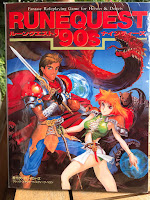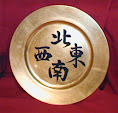This is an old quandary, possibly as old as the game itself: should there be Priests as a character class in
Tunnels & Trolls?
The discussion has recently popped up on the
Let's Talk About Tunnels & Trolls Facebook group. The Trollgod himself,
Ken Saint-André, has explained that “
there are no real gods in [Trollworld]
T & T—just a bunch of very high level wizards pretending to godhood.” However, “
priests, acolytes, monks, priestesses, temple girls, etc. are all common enough in Trollworld T & T. They are job descriptions, just like sailor, baker, tax man, attorney, shopkeeper, etc. If they use magic they can also be wizards, rogues, paragons, specialists, or citizens. If they don't use magic they can also be warriors or citizens. That's a big difference between That Other Game and T & T. TOG classifies character types by appearance; T&T goes by ability/function.”
I can agree with the explanation above. However, if you're not playing in Trollworld but in a fantasy world where gods are
real, how do you manage that? Various ideas have flown round the FB group, mostly about having priests as a mere 'skin' for wizards or rogues. I have mentioned that I use T&T in Glorantha and that, true to the RQ2 feel I try to emulate, ‘priest’ in my games is a title and not a character class.
And then the article titled
Mirabile Dictu!: Priests as Characters in T&T, by
Dorothy V March, which was published in issue 17 of
Sorcerer's Apprentice (1983), was mentioned again. This article gets mentioned
each and every time the quandary is tackled, yet I still have to find someone who's really used it in actual play.
Anyway, since I'm tired of people e-mailing me and asking for a scan of said article, I will summarise it here.
There is a new prime attribute to be added to the other ones at character creation: DEVotion, and there is a new character class, the Priest, that uses DEVotion to fuel their spells — much like wizards use WIZardry to fire off theirs.
As explained earlier, priestly spells (called ‘miracles’) cost a given amount of DEV to be fuelled; when the priest's DEV is low and casting a miracle would require more DEV than available, the excess may be made up by drawing upon STRength at the cost of 2 STR points for 1 DEV point.
DEV regenerates through at least one full hour of prayer and meditation; lost STR will only regenerate after DEV is completely restored, at the rate of 6 ST points per hour.
Priests may only use one
class of weapons, the one favoured by their patron god(s).
A priest may have a holy symbol that functions just like a wizard's staff in terms of focus and cost reduction.
Minimum attribute values to cast miracles of a given level are the same as the wizard's but replacing IQ and DEX with DEV and CHR.
The Acolyte is to the Priest what the Rogue is to the Wizard; he doesn't have any weapon restrictions.
The article then ends with a long spell list that takes up 4.5 pages, from the 1st to the 20th level. The spells are not whimsical and quite D&D-ish in their scope.












